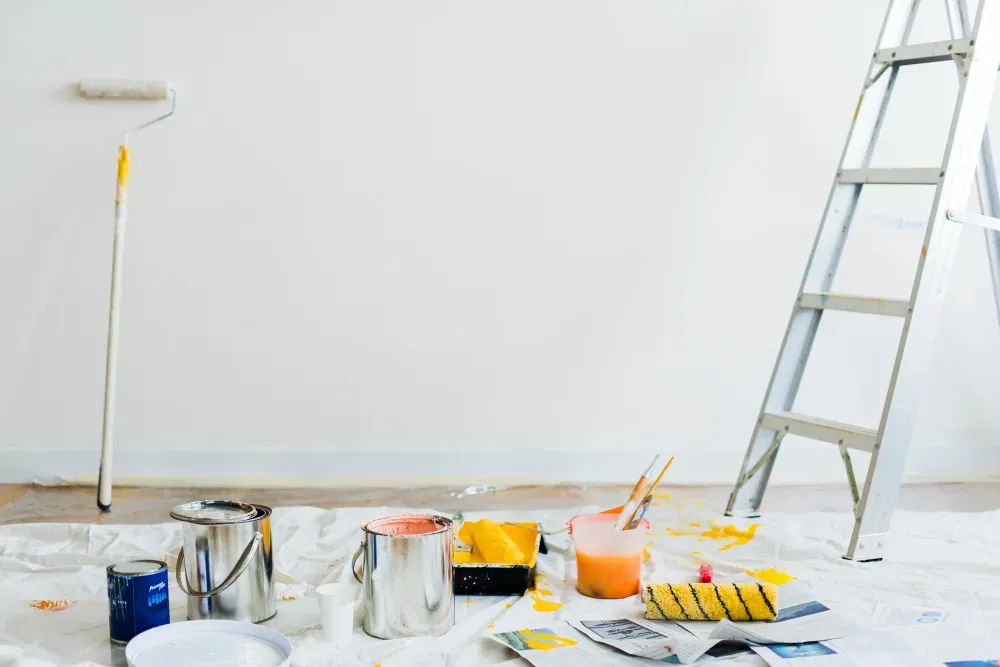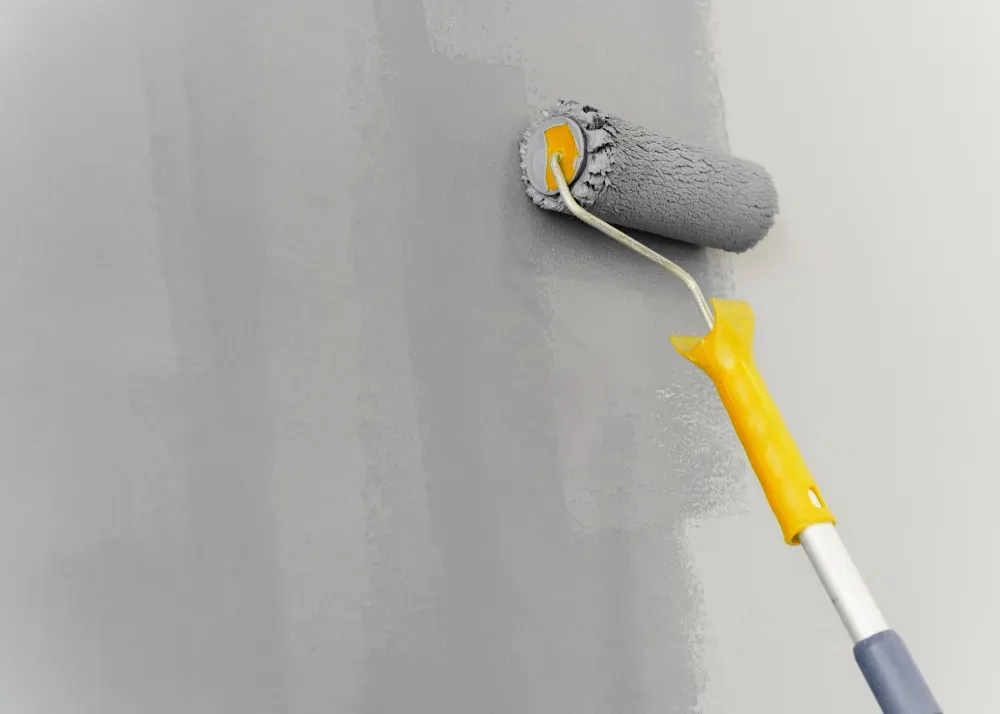Step into the world of Brilliant Brush Painting, where we invite you to explore the transformative magic of interior painting. A fresh coat of paint possesses the remarkable power to revitalize a room, imbuing it with newfound energy, radiance, and personality. Whether you’re a seasoned DIY enthusiast eager to add your artistic touch or a first-time painter embarking on a colorful adventure, our comprehensive guide will gently walk you through every essential step in the process.
From selecting the perfect color palette that resonates with your inner self to mastering the intricate techniques of brushwork and design, we’re here to guide you on this creative journey. Prepare to immerse yourself in a world of possibilities as we breathe new life into your cherished living space. So, without further ado, let’s embark on this exciting odyssey!
The Art of Color Selection
Choosing the right colors for your interior painting project is a crucial step in transforming your living space. In this section, we’ll explore the significance of color psychology, the latest trends in interior colors, finding a palette that matches your style, and practical tips for testing paint colors.
The Role of Color Psychology
Color psychology plays a vital role in setting the mood and atmosphere of your home. We’ll examine how different colors can evoke various emotions and guide you on using this knowledge to create the ambiance you desire in your living spaces.

Popular Interior Color Trends
Staying up to date with interior color trends can provide fresh and innovative ideas for your project. We’ll showcase the current trends in interior color palettes, from timeless classics to bold, contemporary choices, helping you make informed decisions for your painting project.
Finding Your Personal Color Palette
Your home should reflect your personality and style, and your chosen colors play a significant role in achieving this. In this part of our guide, we’ll explore methods to identify a color palette that resonates with you, ensuring your home feels like a true reflection of your unique taste.
Tips for Testing Paint Colors
Selecting the right color can be challenging. We’ll provide practical tips for testing paint colors in your actual space, helping you make sure your choices work well with your lighting, furniture, and decor. Testing your colors is a crucial step to ensure the final result aligns with your vision for your home.
Prepping Your Space
The key to a successful interior painting project lies in the preparation of your space. Proper preparation ensures that your paint job will be smooth, clean, and long-lasting. In this section, we’ll delve into the essential steps to get your space ready for a fresh coat of paint.

Gathering the Necessary Tools and Materials
Before you embark on your painting journey, it’s crucial to have all the required tools and materials at your fingertips. Here’s a checklist of what you’ll need:
Paint: Choose your preferred color and finish, whether it’s matte, satin, or glossy.
Paintbrushes: Invest in high-quality brushes for cutting in and detailing.
Rollers: Opt for rollers that match the texture of your walls.
Painter’s Tape: For creating clean edges and protecting fixtures.
Drop Cloths: Cover floors and furniture to prevent paint splatters.
Paint Trays: To hold and distribute paint evenly.
Extension Poles: For those hard-to-reach areas.
Sandpaper: Smooth out any imperfections on the walls.
Spackle and Putty Knife: Fill holes and cracks in the wall.
Primer: If your walls require it.
Bucket and Rags: For cleaning and wiping surfaces.
Having these supplies ready will make your painting project more efficient and less stressful.
Cleaning and Clearing the Room
The first step in preparing your space is to clean it thoroughly. Dust and dirt can affect the paint’s adhesion, so follow these steps:
Remove Furniture: Clear the room of as much furniture as possible. If you can’t remove everything, move it to the center of the room and cover it with drop cloths.

Dust and Vacuum: Dust all surfaces and vacuum the floors, including corners and baseboards. This ensures a clean canvas for your new paint.
Wash the Walls: Use a mild detergent and water to wash the walls. Pay extra attention to areas near kitchen stoves or bathroom sinks where grease and grime tend to accumulate.
Allow Surfaces to Dry: Give the cleaned surfaces ample time to dry completely. This step is crucial for paint adhesion.
Protecting Floors, Furniture, and Fixtures
Paint has a way of finding its way onto everything if not properly protected. Here’s how to safeguard your space:
Cover Floors: Lay drop cloths or plastic sheets on the floor to catch any paint drips or spills. Secure them with painter’s tape to prevent shifting.
Shield Furniture and Fixtures: Use old bedsheets, plastic covers, or special furniture covers to protect your belongings. Ensure that everything is fully covered or moved away from the walls.
Mask-Off Fixtures: Use painter’s tape to mask off light switches, electrical outlets, and any fixtures you can’t remove. This will keep them clean and paint-free.
Choosing the Right Paint
Selecting the right type of paint for your interior project is a crucial decision that can significantly impact the overall look and feel of your space. Brilliant Brush Painting is here to guide you through the various considerations to make when choosing the perfect paint for your home.
Ease of Use: Water-based paints are user-friendly and easy to clean up with just soap and water.
Low Odor: They have a minimal odor, making them a more comfortable choice for indoor painting.
Quick Drying: Water-based paints dry relatively quickly, allowing you to apply multiple coats in a shorter timeframe.
Durability: They are resistant to cracking, yellowing, and mildew growth, ensuring a long-lasting finish.
Smooth Finish: They offer a smoother, more polished look, making them a great choice for trim and woodwork.
Stain Resistance: Oil-based paints are less prone to staining, which can be essential in areas where spills are common.
Adhesion: They adhere well to a variety of surfaces, including ones that are less paint-friendly.

Matte, Satin, or Glossy Finish: What to Choose?
The finish of your paint can dramatically affect the ambiance of a room. Here are your options:
Matte Finish: Matte paint has a non-reflective, velvety appearance. It’s perfect for hiding imperfections on walls but can be challenging to clean.
Satin Finish: Satin paint has a subtle sheen, offering a balance between matte and glossy. It’s easy to clean and suits most interior spaces.
Glossy Finish: Glossy paint has a high sheen, giving it a reflective quality. It’s ideal for trim, doors, and accents, as it’s easy to clean and highly durable.
Eco-Friendly Paint Options
For environmentally conscious homeowners, there are now eco-friendly paint options available. These paints have low or zero levels of volatile organic compounds (VOCs), which are harmful chemicals released into the air. By choosing eco-friendly paints, you can enjoy a healthier indoor environment while reducing your carbon footprint.
Tips for Efficiency and Cleanliness
A beautifully painted room can do wonders for the ambiance of your home. However, the process of painting can sometimes be messy and time-consuming. To make your interior painting project a breeze, we’ve put together some essential tips for efficiency and cleanliness. Let’s dive right in:
Time-Saving Painting Hacks
Time is precious, and when it comes to painting your interiors, these time-saving painting hacks will help you get the job done efficiently.
Use Paint Primer: Applying a primer before your paint can save you time and money in the long run. It helps paint adhere better and requires fewer coats.
Cut in First: Start by cutting in the edges and corners of your walls before rolling. This minimizes the need to be extra precise when rolling, which can be time-consuming.
Invest in Quality Tools: High-quality brushes and rollers can make a significant difference in your painting speed and the final result.
Paint Trays with Liners: Opt for disposable paint tray liners to make cleanup a breeze and save time between color changes.
Painting Pads and Edging Tools: These specialized tools can help you paint with speed and precision, particularly when working near ceilings and baseboards.
Minimizing Drips and Splatters
Say goodbye to paint splatters and drips with these handy tips, keeping your painting project clean and hassle-free.

Use Drop Cloths: Cover your floors and furniture with drop cloths to protect them from accidental spills or drips.
Painter’s Tape: Apply painter’s tape along edges and trim to create clean lines and prevent paint from bleeding onto adjacent surfaces.
Pour Paint Carefully: When pouring paint into a tray, do so slowly to avoid splashes and spills.
Keep a Damp Cloth Handy: Have a damp cloth or sponge on hand to quickly wipe away drips or splatters before they dry.
Cleaning Up as You Go
Maintaining a clean workspace while you paint is easy with our ‘cleaning up as you go’ tips. Discover how to keep your project tidy from start to finish.
Regularly Clean Brushes and Rollers: Avoid letting the paint dry on your tools. Rinse them out when you take breaks or when switching between colors.
Tighten Paint Can Lids: When not in use, make sure to seal paint cans tightly to prevent spills and keep your paint fresh.
Dispose of Paint-Soaked Materials Properly: Old rags, brushes, and rollers that are soaked with paint should be disposed of safely to prevent accidents.
Ventilation and Safety Precautions
Prioritize your well-being and the quality of your indoor air by following these ventilation and safety precautions during your painting project.
Proper Ventilation: Ensure good airflow by opening windows and doors when painting. This helps in reducing the inhalation of paint fumes.
Wear Protective Gear: Use safety goggles to protect your eyes, and wear a mask to prevent inhaling paint particles or fumes.
Keep Kids and Pets Away: For their safety and to prevent them from getting paint on themselves, keep children and pets out of the painting area.
Proper Disposal: Dispose of empty paint cans, used brushes, and other materials according to local regulations.
Conclusion
Incorporating these invaluable time-saving tips, expert strategies for minimizing drips and splatters, diligent cleaning up as you go, and unwavering dedication to safety precautions will not only make your painting project remarkably efficient but also ensure a significantly cleaner, safer, and more enjoyable transformation of your space. Happy painting, and savor the stunning results!

